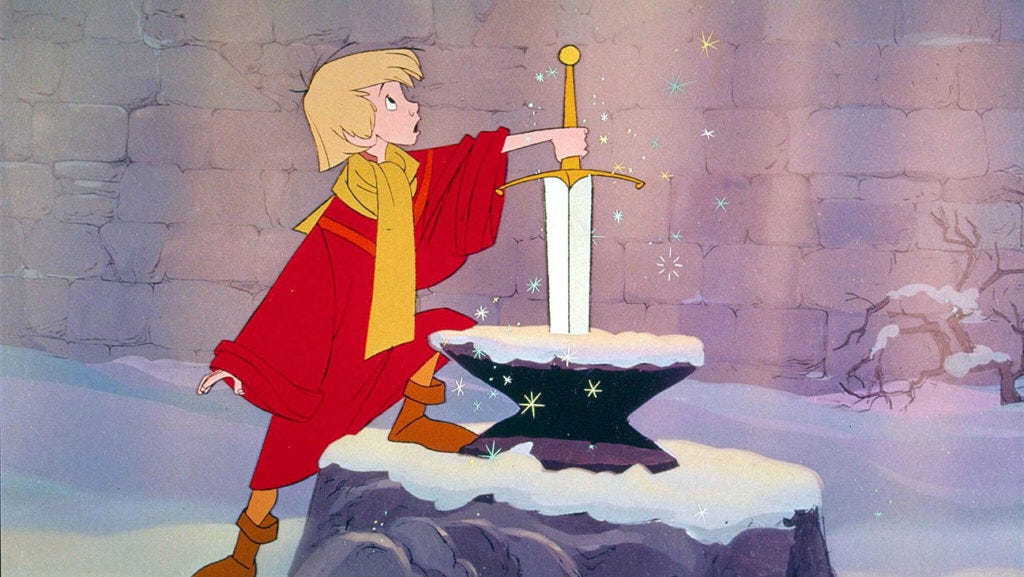Now is the winter of our discontent, made inglorious bummer by this coming fork in road of history.
Yes, it is the first week of November. And that can only mean one thing.
The Christmas season is upon us.
I know, it’s a big week for other reasons. So at the risk of defying deserved gravity with levity, I will add one risible referendum to our communal ballot: Jews and Christmas music—yay or nay?
As a cantor, you may think me an unlikely expert on this subject. But what you may not know is that I was a collegiate caroler in the Yuletide high season of Colonial Williamsburg for four straight years. I know this repertoire colder than Dylan Thomas in a Welsh December. And not just the American ones, but the old, esoteric ones in foreign and ancient languages with christological references as rich as figgy pudding.
You might also expect me, as a religious Jew, to abjure my former days singing musical tales of the young JC. And certainly, I am not wont to seek out these opportunities any more. But when it comes to appreciating the music, I cannot help but recall an evergreen adage which I learned at Jewish summer camp:
“Communication is 55% body language, 38% tone, and 7% words.”
So while I don’t identify with the textual 7% of a good Christmas carol, the other 93% of its musical content I find timelessly endearing.
But does that mean that this qualifies carols for Jewish religious life? Far from it.1 Larger December dilemmas lay behind these smaller matters of taste and propriety, ultimately pointing to significant religious and philosophical questions: What are the sonic boundaries between Jews and the West? What is distinctive and what is shared? And are there ways in which we essentially differ beyond the textual seven percent, to the essential character of the musical communication waves we use?
As I discovered in my doctoral research this week, Jews have struggled with these issue for hundreds, even thousands of years. To get to the source of the discourse, we have to go all the way back to the Ancient Greeks.
Thank you for reading Beyond the Music! If you enjoy reading this newsletter, please consider supporting me with a paid subscription.
Music: A Jewish Science?
One of the major sources for Western musical thought is the Greeks and their conception of the seven liberal arts. The Romans ultimately adapted and divided these disciplines into two groups: the trivium - grammar, logic and rhetoric - and the quadrivium - geometry, arithmetic, astronomy and music. These latter four were based on numbers, with the realm of music conceived of as “numbers in space,” based on the Pythagorean conception of musical intervals based on mathematical ratios.
This may sound the dry professorial fare, but nothing could be further from the truth.
One need only hearken the word of the great modern classicist — Donald Duck.
(To listen to his bit on music, start playing at 2:25).
We had this on VHS when I was a kid. Little did I know that I would return to it in my adult life as a primer on the Pythagorean concept of music. This Disney classic captures the wonders of the natural proportions and harmonies which Pythagorean thinking identified in the natural world. Pythagoras also revolutionized the world of music, leading to theories of precise tuning and scales which would ultimately define what would come to be called “classical” music.
The implications of this, for the West and for Jews as well, are actually quite staggering and largely understudied.2 But even just the presence of music within the liberal arts ultimately allowed them to be claimed by the Abrahamic religions, as Christianity, Islam and Judaism all studied and wrestled with the Greek wisdom during the medieval and early modern periods.
Jews in Europe looked to their Christian neighbors as the ones who possessed this “science,” yet one strand of Jewish thought longingly identified it as an originally Jewish possession. As Dante Alighieri’s buddy, Immanuel the Roman (Immanuel Ha-Romi), famously wrote: “What does the science of music say to the Christians? ‘I was surely stolen from the land of the Hebrews.’”3 Other medieval writers like Rabbi Yehuda HaLevi (1075-1140) in the Kuzari identified the science of music as the original province of the Temple levites. Yet while Jews had their own music cultures, the technologies of musical notation or Western musical complexity were far from their grasp. Medieval Jews were persecuted, culturally self-segregating, and excluded from the Christian society in which “music” was taught. But the adoption of the seven liberal arts (שבע החכמות) as Jewish nevertheless kept the door quietly open to future Jewish claims on their religious authenticity.
The Sword in the Stone: Jewish Claims to Western Sound
What are the boundaries between Jewish and Christian sound? This question was fascinatingly examined through the lens of the “science of music” by Rabbi Yoel Sirkis (1565-1641), one of the great Jewish legal thinkers of the Polish-Lithuanian Commonwealth. When asked about whether Jews can use Christian melodies in synagogue, he had a surprisingly nuanced response (Bayit Hadash HaYeshanot #127):
As for the fact that they sing in synagogues the melodies that are sung in churches, it seems to me that one can only prohibit such melodies that are specific to [Christian] worship. This case is just like that of the stone pillar prohibited everywhere because the Canaanites made it for idolatry…
R. Sirkes’ comment first firstly implies a subset of shared melodies which are used in Christian worship but not exclusive to it. As Michael Lukin of Hebrew University recently pointed out, this observation conveys a repertoire of orally-transmitted music popular shared by Jewish and non-Jewish communities in Poland-Lithuania.4 The existence of shared co-territorial oral repertoires between Ashkenazic Jews and the majority cultures of Europe is a well-established phenomenon. Yet the larger question offered by the source is one aspect which makes those melodies permissible: the science of music.
..The rabbis said [of the sword]: since the Bible itself speaks of this method [of capital punishment], we are not imitating the Romans whenever we use the sword, for we did not learn it from them. On the same basis, one might argue that the principle applies also to those melodies [which are a regular part of Christian worship], that we did not learn it from them, but from the science of music…
R. Sirkis here poses a striking analogy — the use of shared melodies is like the use of weaponry: just because the majority culture uses them does not disqualify them form religious use, providing they were used in the Hebrew Bible. R. Sirkis’ analogy thus manifests a Jewish reclamation of the science of music on the basis that it actually comes from biblical antiquity.
Although R. Sirkis’ ruling ultimately proscribes melodies which have become habitual to Christian use (likened to the Canaanite stone pillar), he implies the existence of melodies permissible in synagogue and shared across both cultures, legitimating Jewish use on the mythic basis of a Jewish origin to the liberal arts. This is the sword to which both cultures may lay authentic claim.
Wielding the Musical Sword
Rabbi Sirkis’ perspective on Christian melodies is one of many across early modern Jewish history, reckoning with the Jewish reclamation of music as much as their religious distinctiveness and political fragility would permit. This struggle continued through the Enlightenment, as swaths Jews poured themselves into the musical professions and Western musical cultivation, yet found themselves increasingly alienated from their particularism as Jews.
Even today, this legacy is still a contested one, and many are still working hard to discern what part of the science of music is the sword and what part is the stone. Rabbi Mitchell Rocklin has recently been doing this with Judaism & Western culture in his two year podcast project, The Pillars: An Exploration of Jerusalem, Athens, and the Western Mind. He hasn’t gotten to music yet, but I’m curious what his analysis of these two intersecting traditions will yield.
For me, the issue comes back to my summer camp proverb. If we let go the 7% of musical communication is particular to a culture, but we share the other 93%, does that make the “science of music” kosher? Or are there aspects of affect of Western technologies of musical beauty that require “handling with caution?” This is one of the themes I took up in the beginning of my newsletter, and which I will take up again in weeks to come.
In the meantime, my prayer this week is for those elusive, healing human goods of peace and goodwill. In the current struggle to maintain our unity and humanity, may they bond us together in all the ways we need most.
I avoid liturgical tunes, including carols, for the sake of kitsch or amusement, or where the contrafact is completely at odds with prayer. That said, I have have used a grand total of one carol meldoy in Jewish prayer. It is a little known, beautiful Welsh melody in a lilting D-minor key which I learned in college. I do not know the translation, and its source is far beyond the ken of my congregants who have learned it over the years.
The Italian Jewish music theorist Rabbi Yehuda Moscato (1530-1593) opined that Yuval, the biblical father of music in Genesis, actually discovered the Pythagorean ratios for music. While his own Hebrew music treatise was a one-off in early Jewish music, the question of how Pythagorean concepts influenced Jewish musical thought over time is still a wide open.
Immanuel here quoted Gen. 40:15, in which Joseph recounts how he was stolen from the land of the Hebrews.
Lukin hypothesizes is linked to the use of traditional popular melodic material which was increasingly used in seventeenth-century Polish churches.








Oy, time to look up Yigdal, learned as a Presbyterian hymn, "The God of Abraham Praise". In high school a favorite, besides Parry's "Jerusalem", was the "Northfield Benediction", a setting of the Priestly Benediction. I'd attach the music if I could... it's very nice.
Fascinating to me with a tutored education in music and a religious education branched into Judaism by seduction of the mind, and heart.